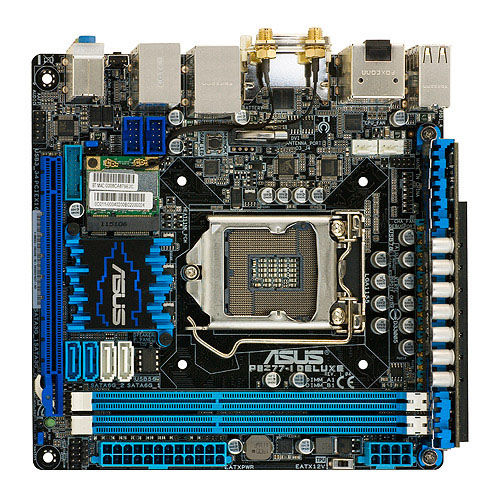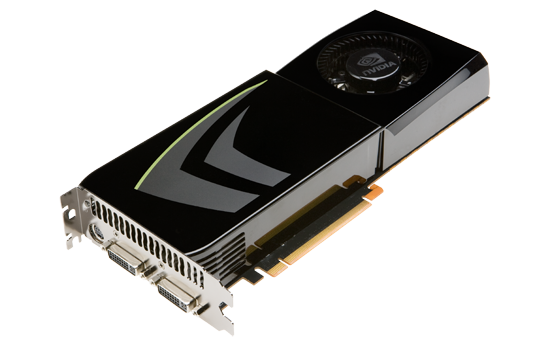sliderider wrote:Are you sure heat and power draw won't be an issue putting that card in a mini-ITX case (assuming you can find one that it fits)? That was a pretty powerful card in it's day. There are newer cards that are just as powerful, smaller, draw less power and throw off less heat that would be more suited to a mini-ITX system. Just doing a quick check I see that a GTX660 (not Ti) totally outclasses a GTX285.
"They" actually make cases/boards/power supplies/etc designed around mini-ITX gaming systems. I've seen demonstrator systems with Radeon R9 295X2s and GTX 590s in the past; I think a single 285 should be workable in such a case. But you're right about more conventional ITX cases being massively out-classed by something like the 285. 660 is a very good suggestion - they run quite cool at idle, and stay very quiet overall. 😀
Kreshna Aryaguna Nurzaman wrote:
So yes, the GeForce 310M is Tesla architecture, and it works with almost old games I run, even MDK - a Windows 9x games that just happen to run on Windows XP. So I guess a more powerful Tesla generation like GTX 285 should be safe, shouldn't it?
In theory yes it should; but I'll add that running Windows XP is a bigger "deal" imo than a specific generation of card. When I still had Windows XP on my newest computer, it ran old games (including 9x games) without issues (except for ones that had problems with it being SMP or had issues with their installers not recognizing the hard-disk capacity right). Switching to Windows 7 x64 broke quite a few of those titles. No hardware change occurred for that upgrade either.
Well I aim for the "most powerful, yet still compatible with older games" nVidia card to max AA on older games.
SLI will give you advantages for AA; specifically SLI-AA mode. If you're really just looking at titles like WarCraft III or things from around that time (so let's say something like Morrowind or Halo would be your most demanding task; feel free to correct that assumption if it's wrong), you would probably better serve your goal with multiple GeForce 7 or 8/9 cards and SLI-AA.
Thanks. How small is a micro ATX compared to mini ITX? Would it be small enough to be put on a "boss desk"? On my desk there are already paper tray, CH Fighterstick and CH pro throttle, and file holders. Besides the mini PC, I also plan to put a wireless S/PDIF transport on the desk (because my amp is behind my head).
"True" ITX, like what I'm assuming sliderider is thinking of, will be relatively smaller. But most of those cases won't take full-size optical drives or power supplies, nor will they fit the GTX 285. More conventional ITX cases designed to handle full-size expansion cards and PSUs won't be much smaller than mATX; the biggest difference will be the height of a MicroATX tower relative to a Mini-ITX tower.
Look at cases like these as examples:
http://www.rosewill.com/products/1813/Product … il_Overview.htm (I actually have this case - it does very well with a Pentium 4 and GeForce FX 5800 Ultra installed; it's compact but it isn't cramped)
http://www.aerocool.us/pgs/pgs-q/qx2000.htm (this style of case, the "cube", was very popular a few years ago - you should still be able to find equivalent designs from Thermaltake, Apevia, Silverstone, and Cooler Master; this one is just an example)
While ITX cases that will accomidate your needs would be more like these:
http://coolermaster-usa.com/product.php?produ … ame=Elite%20130
http://silverstonetek.com/product.php?pid=352&area=en (this one, and a lot of towers like it, can actually handle either form factor)
The size difference won't be that dramatic; you won't fit the GTX 285 (or anything of that size) into a more "standard" ITX case like this one:
http://silverstonetek.com/product.php?pid=419&area=en
If you want something that small you'd need to ensure that your build has a decent IGP. I know the newest Intel IGPs are reasonable improvements - the one in my laptop can load and run Age of Empires II HD and Morrowind without much trouble, it's an HD 3000 something. I wouldn't expect it to handle anything much newer, like say Fallout 3 or Watch_dogs.
My Lenovo B460 laptop is dual-core, and many old games work with that. So my goal is to "replicate" the laptop's backward-compatibility in a small PC.
That makes sense. Sounds like you've also tested/checked it out for the games you want to run, so it's nothing I'd worry about in your case then. Just felt it was worth noting. 😊
Is it as backward-compatible as Tesla architecture?
I don't see any reason it shouldn't be - they have Windows XP drivers, and are only a generation or so beyond the GT200 cards (GT200->Fermi->Kepler). I have a Kepler in a Windows 7 machine that I can check a few games on (for example I have WarCraft 3, but haven't started it up in a while - I'd be happy to give that a shot, but I'm assuming it will work given that it's listed on GeForce Experience). I don't have install media/copies/etc of some of the games you've mentioned, like NWN1, though.
Again, IME, the bigger "gotcha" is Windows XP vs Windows Vista/7, not the hardware itself. If backwards support is really the concern though, and if we really are talking games from say, 2002 and earlier, I'd save the money and get a 7900GTX and be happy. It'll work AOK under Windows XP (and will also work under Vista/7 if you ever need to upgrade - my 7900GS can run Aero Glass without trouble, so I'd assume the GTX shouldn't have trouble either), and is still massive overkill compared to a GeForce 2/3/4 that most of those older games are probably looking for. It has a considerable advantage in terms of fill-rate, memory bandwidth, etc. It won't do GPU computing or DirectX 10 or PhysX or what-have-you, but it sounds like none of those items are concerns. They're also fairly quiet, and won't use as much power as the GTX 285.
Something like this:
http://www.ebay.com/itm/nVidia-GeForce-7900-G … =item4d1d7e6604
That rail/sled will make it a full 13.5" card, but it isn't that hard to remove, and return the card to its original 8-9" size. 😀
If you went with Micro ATX you could probably have SLI if you wanted - I wouldn't try 7950GX2s unless you can confirm them working on a specific model that you're looking at, but a pair of 7900GTX or similar (or GTX 285 😈) shouldn't be a problem as long as the board supports SLI.
This board lists WindowsXP drivers on the Asus website:
http://www.asus.com/us/Motherboards/GRYPHON_Z87/
And it supports SLI. I don't know much else about it though - just looked up a board that seemed to meet the criteria of being mATX, supporting SLI, and having Windows XP drivers. 😊 There are likely other boards with a similar layout, I just happen to like Asus and it was near the top of my search results. 😀
Thanks! Actually I also aim for GX2, but it will be in a full ATX tower in my (yet-to-built) dedicated gaming room. 😁
Ah! 😀
Kreshna Aryaguna Nurzaman wrote:By the way, there is a 600 watt mini ITX PSU, but I wonder if it supports dual PCIe power connector.
Also, Cooler Master Elite 120 Advanced supports full ATX PSU. I wodner if the Silverstone also supports full ATX PSU as well.
That's *really really* expensive for that Silverstone. Like almost double what it should cost. 😵
Here's the mfgr's product page:
http://silverstonetek.com/product.php?pid=317&area=en
It has 2 8/6-pin PCIe connectors. 😀
You could alternately go with an ITX case that will accomodate a traditional ATX PSU, and pick whatever model you like. The Silverstone you linked to does not have that capability, but Silverstone does make cases that do (I linked one earlier in this post).
Final odd-ball thought:
If you wanted to kill every bird on your list with a single stone, I'd go with an mATX system, and step up from the GTX 285 to GTX 295 and run QuadSLI in the mATX with a large (at least 700-800W; won't be as much of a problem as it sounds like with modern high efficiency models) PSU. It may get a bit noisy while gaming, but you'd have 32x SLI-AA, massive performance, and the whole thing wouldn't be all that large. Run audio via S/PDIF or USB or what-have-you. It shouldn't cost terribly more than a pair of GTX 285s.
Like this package:
http://www.ebay.com/itm/Dell-NVIDIA-GeForce-G … =item338f907618
You'd have to be a little careful on picking a case (you might consider one of the SS "stack flow" cases like the FT03 (http://silverstonetek.com/product.php?pid=291&area=en), to ensure you got something with a decent front intake to help keep the cards cool, but otherwise it shouldn't be too hard to make it go. 😎




